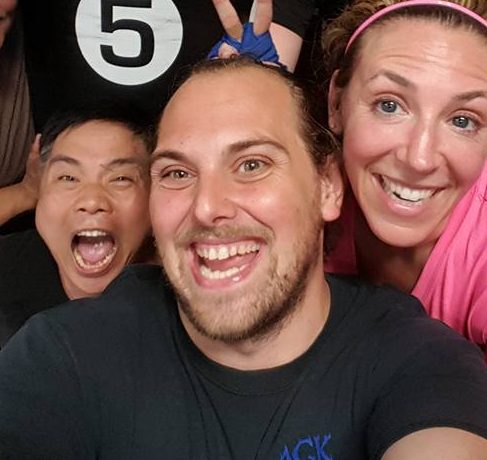Much of what happens in a school of traditional martial arts is designed to teach a set of skills. We train in choreographed forms (Taolu) that teach us theories of movement, how to link techniques together, how to manifest the philosophies of the particular system in our applications, how to execute our attacks and defenses with speed, power and accuracy. We practice choreographed self defense with a partner, both those techniques taught as a part of the system and those the students develop themselves, in order to learn how to gauge distance, improve targeting of sensitive areas of the body, and to provide deeper insight into the forms we have already learned by giving hints to what the motions in the forms represent. We spar to learn how to respond to randomized attacks, to build stamina, to decrease reaction time. We do many things during our time in the kwoon, but all of it is child’s play if we do not make a commitment to ourselves and our fellow students to remember that, while we are learning an art, a form of self expression through an ancient modality of movement, we are also learning a MARTIAL art. We must be constantly mindful of both the Yin and Yang aspects of what we are doing once we dedicate ourselves to learning.
In other articles, I have discussed the difference between traditional martial arts training and pure self defense training, so I won’t really delve into that here. This article is about the fact that, in remembering our martial aspects, we must realize that there is going to be some amount of contact involved in our training. Of course, this level of contact is commensurate with the level of training. I cannot expect a student, on his first day, to try to absorb my best kick, but an intermediate students should be able to survive it, and an advanced student will be more likely to take it in stride. No matter how much we train our techniques, if we crumple the first time we get hit, those techniques will be useless. It is important for a martial artist to build his body and discipline his mind so that when his opponent strikes him, he is able to continue the battle. Nor is getting hit is not our only area of concern. There is a tremendous amount of force generated in a well executed martial arts technique. When I throw a punch and make contact, an equal and opposite force is reflected back toward me. I must be prepared to feel the shock of that reflection. I must make sure my technique is perfect to maximize energy transfer through the structures of my body. I must train before hand to strengthen those structures in order to withstand what returns. I must steel my mind to ignore the impact. The same holds true when blocking. I have seen many martial artists do more damage to themselves in blocking than if they would have simply taken the hit. Blocking an attack does not magically make that oncoming force evaporate, it simply dissipates it across more surface area and (hopefully) across less sensitive areas of our bodies.
While we do want to increase our tolerances for pain, our goal is not to injure ourselves or our training partners. (Check out this article about being a good martial arts training partner). So how do we modify our training to better prepare us? In my classes we use the “Oomph Principle”. When practicing with a partner, whether it is free sparring or choreographed forms, we must attack with enough oomph to make our partner respond with an audible “OOMPH!” Not “ouch”, not “teehee”, not “Oh my goodness, call an ambulance!”… just “oomph”. This is the sound made by someone who has taken a good hit but is still able to continue. For a student who has just started his first lesson, this is not a lot of power, but for a student who has been training for a while, we must strike harder to garner the same reaction. By striking in this power range, the body is hit hard enough to begin to adapt over time. The mind must acknowledge the discomfort, but the student is able to push through. Fear of being injured does not compromise desire to train. Over the course of a student’s development, the amount of oomph required to make him say “oomph” gradually increases. Not only does he refine his own technique to avoid getting hit in the first place, but he is better able to deal with increasing amounts of force when he does end up on the receiving end of a well placed strike. As training becomes less standard and more in line with a realistic modern tactical situation, the addition of stress-induced chemical releases in his body increase this pain tolerance even further. By the time that beginner student has progressed to his Black Sash level, he should feel at least fairly confident in dealing with full force blows. Yes, they will still hurt (this is not a pillow fight), but his body will not break, and his mind will open, clear, and ready to respond.
Yes, martial arts training does have a strong artistic aspect. Yes, martial arts training does have a strong warlike (martial) aspect. This is the natural duality of martial arts training. Yin and Yang, inner development and fighting ability, self expression and self preservation. If we sacrifice the martial for the artistic, then we are simply dancing. If we sacrifice the art for the martial , then we are simply fighting. It is only when we keep both aspects firmly in the forefront of our minds that the true beauty of the martial artist is realized. I encourage each of you to honestly examine your training, to look inward at your fears and hopes as they relate to your training, and then to ask yourselves which aspect of your personal journey could use a little more OOMPH!
Do you live in the Patchogue or Bellport area and want to try out a martial arts class? Test drive our adult martial arts program for free by clicking the button below:

















